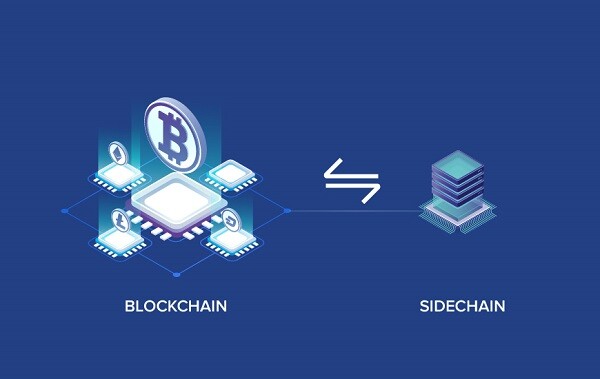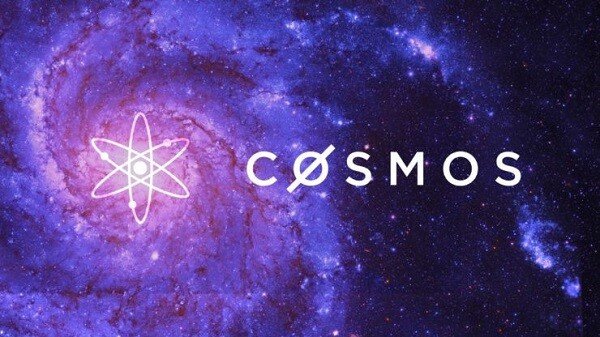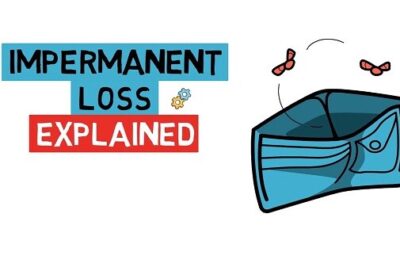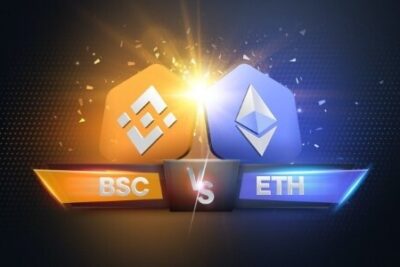

What Is Layer 1 Blockchain? Seeking For The Top Best Layer 1 Crypto
23 June 2022
Are you searching for what is layer 1 crypto and the best layer 1 cryptosphere blockchain? Let’s bePAY helps you. If you are aware of blockchain scalability, then you are also acquainted with layer 1 crypto. The growth and use of blockchain networks are highly dependent on their scalability. This is where the demand for layer 1 solutions would arise.
Then, what exactly are layer one crypto blockchain solutions? What distinguishes them from layer 2 blockchain-based solutions? In the following post, we will learn more about the fundamentals of layer 1 in the realm of blockchain, an in-depth comparison of criteria in crypto layer 1 vs layer 2 blockchain, and seek for top best layer 1 crypto in the list of layer 1 crypto coins.
What Is Layer 1 Blockchain Explained?
A Layer-1 blockchain network is primarily concerned with making the core protocol more scalable. Layer 1 protocols let diverse projects construct unique ecosystems and include two fundamental solutions: sharding and consensus protocols.
The consensus protocol guarantees the integrity of blockchain systems. Nodes are regarded as the blockchain’s pillars since they validate all transactions. Bitcoin, for instance, employs the Proof of Work (PoW) consensus system, which is frequently time and energy-intensive. Sharding is a common Layer-1 scalability technique that divides each transaction into tiny data sets that may be handled in parallel.
Solana (SOL), BNB Chain (BNB), Ethereum (ETH), and Bitcoin (BTC) are what is layer 1 crypto shape. In other words, a protocol is at layer 1 if it processes and concludes transactions on its own blockchain. In addition, they have their own native layer one cryptocurrency for transaction fees.

What is layer 1 blockchain?
The Importance Of A Scaling Solution
Distributed blockchains spread data management and computing responsibilities across nodes. Validator nodes review transactions and secure the network using Proof of Work (PoW) and Proof of Stake (PoS) consensus techniques. The capacity of a network to scale these fundamental blockchain operations is crucial to a decentralized platform’s health, reputation, and longevity.
PoW, which was pioneered on Bitcoin and chosen as the basis for the Ethereum network, is the first blockchain consensus process. The PoW consensus method delivers dependable network security and the capacity to preserve decentralized credibility.
Due to PoW’s intrinsic scaling restrictions, it is very costly for hackers to meddle with the consensus mechanism or change data within blocks carrying a linear history of the whole network. Bitcoin is recognized as a secure store of wealth due to the PoW consensus method, the blockchain’s famous security, and worldwide confidence in the network’s censorship-resistant “decentralization” value proposition.
Though Proof of Work is advantageous for Bitcoin investors with a “store of value” mindset, the consensus mechanism’s significant processing requirements represent a scaling bottleneck for Ethereum’s popular programmable blockchain. Decentralized application developers and proponents of DeFi quickly adopted the network due to the value of its smart contract platform.
Scalability constraints inherent to PoW inspired Ethereum to develop an alternative to the cumbersome consensus technique. In response to heavy network traffic, Ethereum developers are examining a number of layer 1 and layer 2 scaling options.

How scaling solution crucial?
The Main Difference Between Layer 1 And Layer 2 Crypto Explained
Here are some criteria in crypto layer 1 vs layer 2 different from each other.
What Are Crypto Layer-1 Vs Layer-2 Blockchain Distinctions?
Layer-1 refers to the fundamental core blockchain architecture. Contrarily, layer-2 is a network that appears on top of the underlying blockchain. Consider Bitcoin with the Lightning Network. The Bitcoin network is layer-1, whereas the lightning network is layer-2. Now that we’ve established the essential distinction, let’s examine the layer-1 vs layer-2 solutions actively being developed by enterprises. Beginning with layer 1 solutions.
>> For more info about Lightning network
Layer-1 Scaling Options
A Layer-1 network is a blockchain in the decentralized ecosystem, while a Layer-2 protocol is a third-party integration that can be used in combination with a Layer-1 blockchain. For example, Bitcoin, Litecoin, and Ethereum are Layer-1 blockchains. Layer-1 scaling solutions extend the blockchain protocol’s underlying layer to enhance scalability. Several techniques are now being developed and implemented to improve the scalability of blockchain networks directly.
Improving Blocksize
Layer-1 solutions alter the protocol’s rules directly in order to boost transaction capacity and speed, as well as to accommodate more users and data. In order to boost the network, Layer-1 scaling methods may include increasing the amount of data contained in each block or accelerating the pace at which blocks are validated.
Other fundamental blockchain changes required for Layer-1 network growth include Improvements to the consensus protocol and Sharding.

The difference between layer 1 and layer 2 crypto explained
Improvements To The Consensus Protocol
Some consensus processes are more efficient than others. Proof of Work (PoW) is the consensus protocol in use today on prominent blockchain networks such as Bitcoin. PoW is secure, although it can be slow. As a result, Proof-of-Stake (PoS) is the consensus method of choice for the majority of new blockchain networks.
Instead of needing miners to solve cryptographic algorithms employing substantial processing capacity, Proof-of-Stake (PoS) systems process and validate new transaction blocks depending on network participants staking collateral.
With Ethereum 2.0, Ethereum will migrate to a Proof-of-Stake (PoS) consensus method, which is projected to significantly and fundamentally enhance the network’s capacity, while also enhancing decentralization and preserving network security.
Sharding
Adapted from distributed databases, sharding has become one of the most popular Layer-1 scaling options despite its experimental nature in the blockchain industry. Sharding involves dividing the state of the entire blockchain network into discrete datasets known as “shards” – a process that is more manageable than asking all nodes to maintain the entire network. These network shards are handled in parallel by the network, allowing for sequential processing of many transactions.
In addition, each network node is assigned to a specific shard rather than retaining a complete copy of the blockchain. Individual shards offer proofs to the mainchain and interact with one another, using cross-shard communication protocols to share addresses, balances, and general status. Along with Zilliqa, Tezos, and Qtum, Ethereum 2.0 is a prominent blockchain technology currently investigating shards.

Layer-1 vs layer-2 scaling solution
Layer-2 Scaling Options
Layer 2 blockchain technology acts on the native layer to increase its performance. Effectively offloading transactions, Layer 2 transfers a portion of the transactional load of Level 1 blockchain to another system design.
The Layer 2 blockchain then manages the processing load and notifies the Layer 1 blockchain of the finalized results. Since the majority of the data processing burden is transferred to this neighboring auxiliary architecture, network congestion is minimized; not only is Layer 1 less crowded, but it also becomes more scalable.
Bitcoin’s Lightning Network is an example of a Layer 2 blockchain. It is a Layer 2 scaling solution that simultaneously takes Bitcoin’s load and reports it. As a result, the Lighting Network boosts the Bitcoin blockchain’s processing speed. In addition, the Lightning Network incorporates smart contracts into the Bitcoin Layer 1 network.
Here are some additional Layer 2 scaling options:
Nested Blockchains
A nested blockchain is a decentralized network infrastructure that uses a primary blockchain to specify parameters for the larger network, while executions are carried out on an interconnected web of secondary chains. On this mainchain, many blockchain tiers are constructed using a parent-child relationship. The parent chain delegated work to the kid chains, which completed it and returned it to the parent.
Unless essential for dispute resolution, the underlying blockchain does not participate in-network services. The OMG Plasma project is an illustration of Layer-2 stacked blockchain technology that is utilized on top of Layer-1 Ethereum to support faster and less expensive transactions. This model’s work distribution minimizes the processing load on the mainchain, which exponentially improves scalability.
State Channels
State channels provide bidirectional communication between blockchain parties. By doing so, participants can cut waiting time because no third party, like a miner, is engaged in the transaction.
Participants agree beforehand, per smart contracts, to seal off a segment of the basic layer. They may then communicate directly with one another, removing the need for miners. After completing the whole sequence of transactions, the final channel state is added to the blockchain.
Both Ethereum’s Raiden Network and Bitcoin’s Lightning Network are instances of state channels. The Lightning Network enables members to execute several microtransactions within a certain time frame. Meanwhile, Raiden lets participants operate smart contracts over personal channels.
State channels such as the Lightning Network are completely secure, as only the participants are aware of the transactions. The Ethereum Level 1 blockchain, on the other hand, captures all transactions in a publicly auditable ledger.
Sidechains
Sidechains are a scalability alternative for Layer 2 blockchain technology, alongside state channels such as the Lightning Network and smart contracts. A sidechain is a transactional chain that facilitates many transactions. It has a separate consensus process from the native layer. It is possible to adjust the method to improve scalability and processing performance. In this scenario, the mainchain must validate transaction data, maintain security, and resolve disputes.

Sidechains
Sidechains vary from state channels in that all transactions are recorded openly on the ledger. In addition, a sidechain’s security violation does not affect other sidechains or the base layer mainchain.
>> For those who love to make a deep research on Sidechain
Rollups
Rollups are scalability solutions for Layer 2 blockchains that perform transactions outside of the Layer 1 and upload the transaction data to it. Since the data is on the base layer, Layer 1 is able to secure rollups.
There are two distinct security models for rollups:
- Optimistic Rollups: These rollups presume that transactions are legitimate by default. Consequently, they only undertake computations to identify fraud in response to a challenge.
- Rollups with Zero-Knowledge: These rollups perform calculations off-chain. Then, they send the evidence of validity to the base layer or mainchain.
Rollups aid in boosting transaction throughput, expanding participation, and lowering gas costs for users.
Top Best Layer 1 Crypto
Except for Bitcoin (BTC) and Ethereum (ETH), there are so many other Layer 1 crypto coins. Let’s look at a list of layer 1 crypto coins that you can take into consideration.
Avalanche
Avalanche (AVAX) is in the first place in the list of layer 1 crypto coins is layer one crypto.
It has the quickest time to finality, which is the point at which you can be confident that a transaction cannot be undone. This is due to its innovative consensus method. Additionally, it requires minimum hardware to operate a node, making it more decentralized than the majority of layer 1 platforms.
Key features:
- Lightning
- Quick >4,500 TPS
- EVM compatible

Avalanche
Cardano
Cardano’s long-term research aims to empower people most in need with a more inclusive, secure, and scientifically-based technology standard. Cardano (ADA) a layer 1 crypto, aspires to shift power from unaccountable institutions to the periphery — to individuals. Notably, Charles Hoskinson, the founder of Cardano, was also a co-founder of Ethereum.
Key features:
- Utilizes peer-review research
- Evidence-based procedures
Solana
Solana (SOL) is a high-performance blockchain with some of the quickest layer 1 transaction speeds, with the objective of reaching over 50,000 TPS (TPS). This level of throughput might support apps with hundreds of millions of users that are decentralized. It is secure and scalable, but Ethereum is more decentralized.
Key features:
- Superior performance
- Rapid adaptation
- Web3 compliant
Polkadots
Polkadot (DOT) is amongst the very potential layer one crypto projects to be concerned about. It was founded by another Ethereum co-founder, Gavin Wood, and utilizes Parachains to construct an internet of blockchains. Multiple blockchain projects are essentially constructed over the Polkadot network and are able to exchange data and information.
Key features:
- Ecosystem interoperability
- Multi-chain architecture

Polkadots
Algorand
Algorand (ALGO) focuses on the future of finance and seeks to expand the decentralized finance market by substituting established financial models. They have raised hundreds of millions of dollars to expand the ecosystem and have already witnessed growth in a number of industries.
Key features:
- Award-winning team
- Focus on decentralized finance
List of layer 1 crypto coins
what-coins-are-layer-1-crypto-coin
Cosmos
Cosmos (ATOM) is a layer one crypto. It is a developing network of interconnected applications and services designed for a decentralized future. Notably, Binance Smart Chain and Terra both utilize the Cosmos platform. Numerous networks choose to build on Cosmos due to its scalability and interoperability with other networks.
Key features:
- Internetwork of ledgers
- Vibrant ecosystem
- Extremely scalable

Cosmos
NEAR Protocol
The Near protocol (NEAR) is a layer-1 blockchain that aims to serve as the foundation of the evolving web stack. Its extremely scalable and low-cost solution will compete with Ethereum and Polkadot thanks to its sharded proof-of-stake architecture.
Key features:
- Web3 centric
- Extremely scalable
FAQs About Layer 1
What Is The Main Approach Of The Layer 1 Blockchain Scaling Solution?
Layer 1 scaling solutions usually approach consensus protocol improvements, sharding, and changes in block sizes.
What Is Sharding In Crypto?
Sharding is the process of dividing a blockchain into many shards and storing them in different locations. By storing data on multiple computers, the computing load on each can be decreased. This enables the network to handle a greater volume of transactions.
What Is Blockchain Trilemma?
The Blockchain Trilemma is the prevalent idea that public blockchains must sacrifice either security, decentralization, or scalability.

Layer 1 crypto frequently asked questions
Wrapping Up
Emerging Layer-1 blockchain developers are in a position to use Bitcoin and Ethereum’s pioneering protocols while continuing to eliminate scalability-limiting aspects. To address scalability issues, a new generation of Layer-1 blockchains and protocol advancements is developing. Emerging blockchains like Solana have adopted Ethereum’s Proof-of-Stake consensus mechanism and are developing their own L1 scaling solutions.
Layer-1 blockchain performance must be able to surpass the performance of centralized, mainstream transaction platforms if DeFi is to continue to grow and compete with established financial platforms. With the Ethereum network, developers are creating Layer-1 blockchains with scalability solutions intended to solve the Blockchain Trilemma.
A new generation of Layer-1 blockchains and protocol breakthroughs, such as Solana with its potential Proof of History protocol, attract investors and skilled developers in search of a blockchain that is really scalable. DeFi will likely be characterized by various Layer 1 smart contract blockchains that provide solutions for undiscovered use cases.

What Is A DApp – The Gateway To Interact Decentralized
22 March 2022
What Is Impermanent Loss And How Does It Work?
29 March 2022









